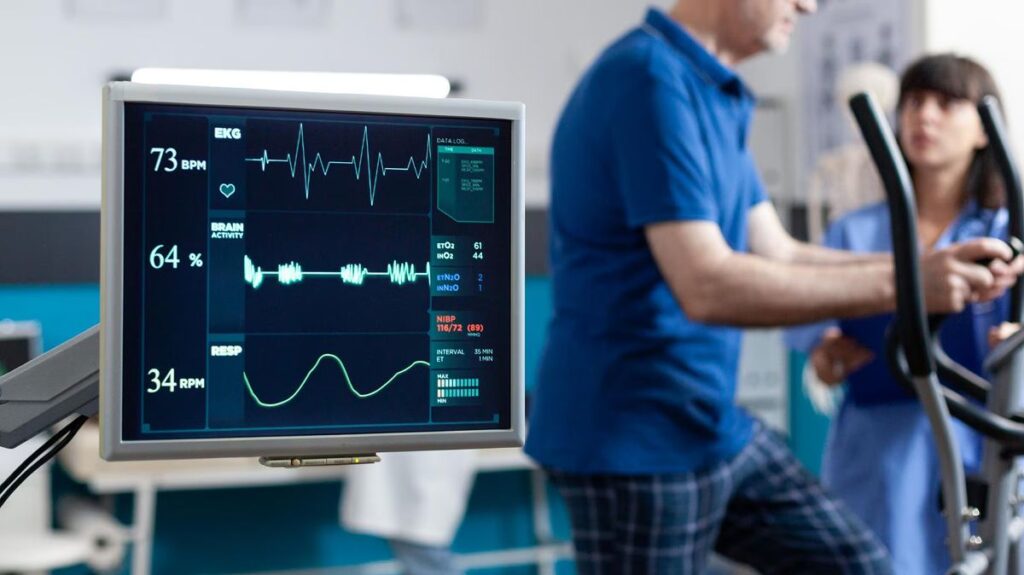Introduction:
The Germany Patient Monitoring Market is experiencing a significant shift due to the growing integration of telemedicine with advanced patient monitoring systems. Telemedicine, which allows patients to consult with healthcare providers remotely, has become an essential part of healthcare delivery, especially as it enables continuous monitoring of patients' health from the comfort of their homes. This synergy is creating a more efficient and accessible healthcare system, particularly in Germany, where there is a strong emphasis on digital health innovation.
The Role of Telemedicine in Modern Healthcare
Telemedicine is transforming traditional healthcare by eliminating the need for patients to be physically present at clinics or hospitals. Through telemedicine platforms, healthcare providers can consult with patients in real-time, exchange health data, and track patient progress remotely. This is especially beneficial for people in rural or underserved areas who might not have easy access to medical facilities.
In the Germany Patient Monitoring Market, telemedicine has gained traction as it allows patients to stay connected with their healthcare providers without leaving home. As a result, healthcare delivery is becoming more convenient, cost-effective, and timely. By integrating telemedicine with patient monitoring systems, healthcare providers can maintain a comprehensive view of a patient's health data without the need for constant in-person visits.
Telemedicine and Real-Time Health Data Monitoring
Telemedicine has proven to be particularly valuable when combined with real-time patient monitoring systems. These systems track a patient’s vital signs, such as heart rate, blood pressure, and oxygen levels, and send the data directly to healthcare providers. With this integration, doctors can provide timely interventions if any irregularities are detected.
For example, patients with chronic conditions like diabetes or hypertension can wear monitoring devices that transmit data to their doctors. This allows healthcare professionals to monitor the patient's health status continuously, ensuring that any fluctuations in health are addressed before they lead to serious complications. Additionally, it ensures that patients receive the best possible care, even without being physically present in a healthcare facility.
The convenience and efficiency of this integrated system are accelerating its adoption within the Germany Patient Monitoring Market. Patients benefit from a more seamless healthcare experience, and healthcare providers can deliver more personalized care.
Advantages for Healthcare Providers
For healthcare providers in Germany, integrating telemedicine with patient monitoring systems brings several key advantages. First, it reduces the strain on healthcare facilities by minimizing the number of in-person visits required. This, in turn, allows healthcare providers to focus more on critical cases while still ensuring that other patients receive adequate care.
Moreover, telemedicine and patient monitoring systems facilitate better data sharing between patients and healthcare providers. With immediate access to health data, doctors can make more informed decisions and adjust treatment plans as needed. This ensures a higher standard of care and greater patient satisfaction.
Telemedicine also reduces the risks associated with hospital readmissions. Patients are more likely to remain compliant with their treatment plans if they feel continuously monitored, leading to better long-term health outcomes.
Improving Access to Healthcare
In regions with limited access to healthcare facilities, telemedicine and patient monitoring systems help bridge the gap by providing healthcare services remotely. This is particularly relevant in rural areas or areas where there is a shortage of healthcare providers.
Telemedicine platforms are increasingly accessible via smartphones and other portable devices, ensuring that healthcare is available to people wherever they live. Patients no longer need to travel long distances to receive basic medical consultations, and they can monitor their health without leaving home. This creates a more inclusive healthcare system, reducing disparities in access to medical care.
The Germany Patient Monitoring Market is benefiting greatly from this improved access to care, as more people can now utilize these advanced monitoring systems to manage their health.
The Future of Telemedicine and Patient Monitoring Integration
Looking ahead, the integration of telemedicine and patient monitoring systems is poised to play an even more prominent role in shaping the future of healthcare in Germany. As technology continues to evolve, these systems will become more advanced and integrated, enabling even more precise and personalized care.
In the future, the use of artificial intelligence (AI) and machine learning (ML) in telemedicine and patient monitoring is expected to increase. AI and ML can analyze patient data in real-time, identifying potential health risks and predicting possible outcomes based on historical health data. This integration will lead to more proactive healthcare management, allowing for earlier detection of issues and a higher quality of care overall.
Moreover, the widespread adoption of 5G technology is likely to enhance the speed and reliability of telemedicine services. This will allow for faster and more efficient transmission of health data, enabling healthcare providers to monitor patients in real-time with minimal delay. The synergy of 5G, AI, and patient monitoring systems will undoubtedly revolutionize healthcare delivery, making it even more efficient and effective.
Conclusion
The integration of telemedicine and patient monitoring systems is transforming healthcare delivery in Germany. By allowing continuous remote monitoring of patients’ health data, these technologies are improving the quality of care while reducing costs and improving patient convenience. The future of healthcare in the Germany Patient Monitoring Market is increasingly digital, with telemedicine and monitoring systems working hand in hand to provide more personalized, efficient, and accessible care. As technology continues to advance, the potential for these systems to shape the future of healthcare is boundless.





Comments